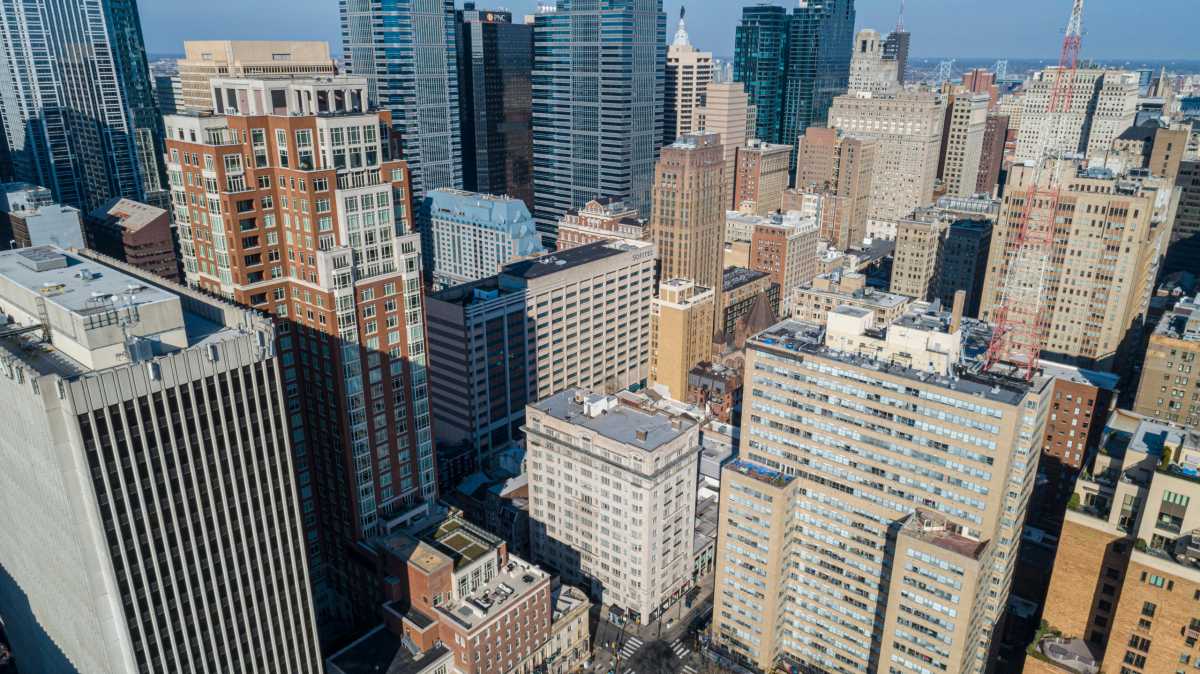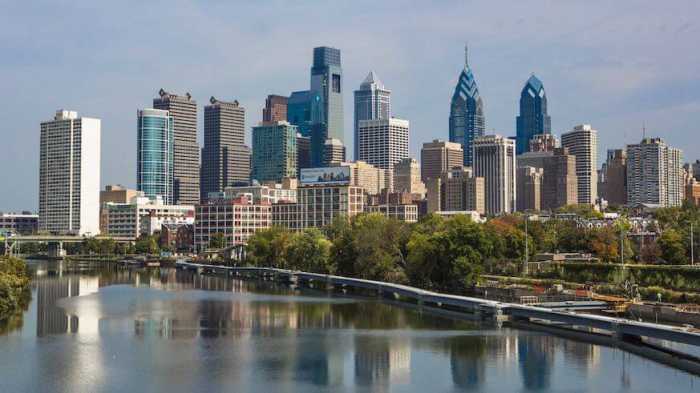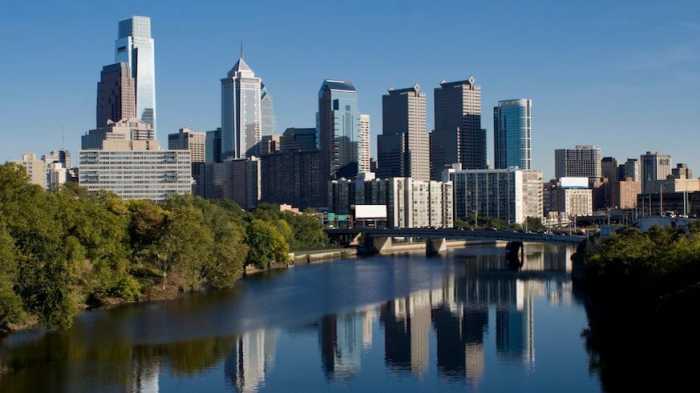News of a novel coronavirus vaccine has offered hope to everyone, including those in Philadelphia’s business community.
Corporate leaders, during a panel discussion Tuesday, offered a fairly optimistic outlook on the future of Center City, even as downtown traffic has fallen precipitously and the hospitality industry remains hobbled by the pandemic.
“We’re really bullish,” said Jim Pearlstein, a real estate developer who runs Pearl Properties. “We’re looking at this next six month time period as a phased-in back to normal.”
Pearlstein is president of the board of the Central Philadelphia Development Corporation, which hosted the virtual event along with the Center City District.
They tried to predict which trends that have emerged during the pandemic will stick around, such as working from home, and which ones are temporary.
Critical to Center City’s economic health, Pearlstein argued, is office workers returning to their desks, but it doesn’t look like that will happen soon.
Comcast will not bring back a majority of the people who work in its two massive office towers until at least June, and Thomas Jefferson University, which sent 7,000 workers home, has extended work-from-home until May.
“From day one, health and safety has been the top priority for us,” Deborah Buhles, a vice president for Comcast, said during the meeting.
Pearlstein said major employers have told him that they plan to bring employees back between April and August.
Along Market Street, about 10% of office workers are physically going to work currently, said Jack Soloff, a senior managing director for Newmark Knight Frank, a commercial real estate firm.
Companies are trying to determine how many employees will be telecommuting post-pandemic, and how much space they will need, Soloff said.
Over the years, employers have generally reduced their square footage, shrinking the size of workspaces, but he anticipates that will change with an increased awareness of the importance of distancing.
There’s also a growth in “hoteling,” where employees don’t have assigned seats, using whatever desks are open when they arrive at the building.
Clayton Mitchell, Jefferson’s senior vice president for real estate and facilities, said the university is looking at a spectrum of possibilities when the pandemic starts to subside.
“There’s a good chunk of our workforce that will probably work remote permanently,” Mitchell said.
For example, call center employees, which make up a significant part of the workforce, have been able to transition well to working from home, he said. Only a fraction are expected to return in-person.
Pearlstein said he believes major employers have an obligation to require office employees to return, at least eventually, to aid smaller businesses that rely on their workers.
“As far as getting our workers back, it’s really important,” he said. “Office density matters for our economy, flat-out.”
Counters maintained by the Center City District show pedestrian traffic is down 65% compared to last year on West Market Street and John F. Kennedy Boulevard, where many offices are clustered.
The pandemic, Mitchell said, has made Jefferson double-down on its strategy to shrink its real estate footprint, particularly space dedicated to administrative use.
Office vacancies in Center City rose 1% in the third quarter of this year, with 350,000 square feet newly available, according to CCD’s most recent monthly report, which was released last week.
However, rents have remained stable, and there has not been a mass exodus of companies to the suburbs, the report found.
Soloff said a positive is that Philadelphia’s offices contain a lot of law and financial services firms.
“We see these folks coming back in higher percentages, at least initially, than the tech companies who are much more comfortable working remotely,” he said. “I think that bodes well for Philly.”
In addition, there’s a growing interest in converting offices into life science facilities, especially in University City, according to Soloff.
Paige Jaffe, who works in retail real estate for JLL, said most shops have been struggling, aside from grocery stores, financial institutions and service firms.
“We’re very bullish on the second half of 2021,” Jaffe said. “People can return to work, so we should be in a very vibrant city approaching the holiday season.”
CCD Executive Director Paul Levy said the challenge will be rebuilding confidence and assuring residents that it is safe to ride SEPTA and go into office buildings.
“To me, what we have built in the last 25 to 30 years is this thriving, dense, mixed-use downtown well supported by public transit, and what the pandemic did is go right to the heart of that,” he said. “It made us be afraid of density.”
“I’m very confident the city will come back,” he added. “We’ve got a lot of work to do.”




























